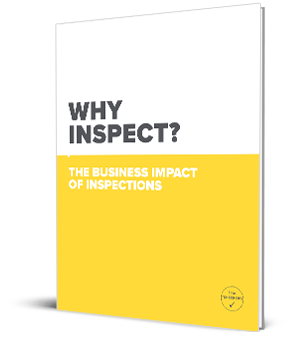Trailers are used by many companies, and for the same reasons that it’s good business to inspect the vehicles pulling them, it pays to regularly inspect the trailers themselves.
Just think of the havoc that can occur if a trailer has a problem going down the road and its contents get spilled. Not only are the contents damaged or destroyed, other people could easily be hurt.
Daily safety inspections of trailers minimize the chances of that happening.
Inspecting trailers also results in maintenance issues being identified for attention before they damage the trailer or tow vehicle.
Using a pre-use inspection checklist for trailers, such as we offer at The Checker, walk-around trailer inspections can be easily done on a daily basis, with all the important items sure to be checked. It’s a quick process that provides significant risk reduction and cost savings.
Here’s what needs checking:
1. Tires.
When tires are not inflated to the correct pressure (either with too much or too little pressure), they wear more quickly. You’ll definitely be going through more tires if you don’t keep them at the right pressure every day.
Even more importantly, the wear caused by improper tire pressure makes them more susceptible to catastrophic failure during use.
Determine the wear on tires by checking the tread depth and its evenness across the tire. Follow manufacturer recommendations about the acceptable level of depth before the tire becomes unsafe.
Finally, check the lug nuts to make sure they’re tight.
2. Brakes and wheel bearings.
The tow vehicle provides the primary stopping power, but the trailer brakes also make a critical contribution. If they’re not working properly, it increases the likelihood that the tow vehicle and trailer will collide with sudden obstructions.
If the trailer brakes aren’t working, it also puts unnecessary extra stress on the tow vehicle’s brakes, causing them to have to be replaced sooner and increasing the potential for them to fail.
If the trailer uses electric brakes rather than surge breaks, test the system battery on the trailer to make sure it’s charged. Also check the condition of the breakaway switch.
3. Hitch and coupler.
The frame mounting bolts should be tight, and no cracks should be anywhere on the receiver, shank, or tow ball. The jaws should fit tight over the tow ball, and the safety latch needs to be pinned.
4. Safety chains.
Check that the links aren’t worn or damaged.
5. Trailer lights.
Test the turn signal and brake lights to make sure they’re working properly.
6. Trailer plugs.
The wiring connections between the tow vehicle and the trailer can wear. Check the receptacle and the plug for broken, frayed, or loose wiring. Also inspect the wiring under the trailer.
7. Springs.
Check to make sure no springs are worn or damaged. Along with the axle, springs absorb much of the stress on the trailer, and when they’re not functioning properly, it means rougher handling of whatever’s being transported.
8. Axle.
Check mounting bolts for proper tightness, and make sure the alignment is correct. A bent or misaligned axle causes tires to wear faster and can make it difficult for the driver of the tow vehicle to adequately control the trailer.
9. Winches and tie-downs.
If winch cables are used to pull items onboard, they should be inspected for fraying. Similarly, inspect tie-downs for wear. Make sure decking bolts or screws are tight.
10. Trailer jack.
Last but not least, make sure the trailer jack is onboard!
Takeaway
To be safe, it’s not enough to inspect the vehicle towing a trailer. To lower the chance of tragic and expensive accidents, as well as to help decrease maintenance costs, the trailer itself needs a thorough safety inspection before use.
Image courtesy of Belinda Hankins Miller, USA, Creative Commons via Wikimedia Commons.










